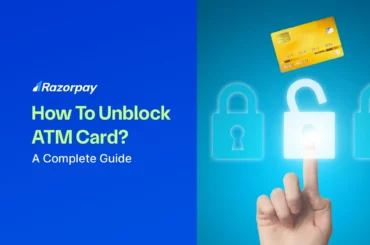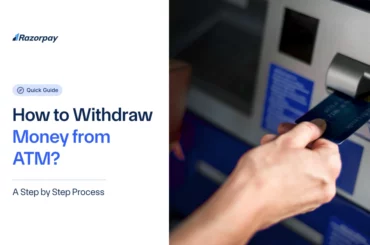Automated Teller Machines (ATMs) serve an important role in modern banking by providing 24/7 access to financial services, boosting client convenience globally. While ATMs offer numerous advantages like speedy cash withdrawals and account management, they also have their own disadvantages, such as security threats and transaction costs. In this article, We’ll discover the top 7 advantages and disadvantages of ATMs, offering an in-depth understanding of their influence on daily banking.
Table of Contents
Advantages Of ATM
1. Round-the-clock Availability
ATMs provide you with any-time access to banking services, making them convenient for urgent withdrawals. This round-the-clock availability increases the flexibility of banking operations, ensuring great customer service.
2. Global Access and Convenience
ATMs offer global access, enabling you to carry out numerous financial activities easily, regardless of where you are. This makes banking easy and accessible, improving customer experience.
3. Reduced Bank Queues
As an alternative to in-person transactions, ATMs considerably reduce congestion at bank branches. By reducing wait times and allowing staff members to concentrate on more complicated customer needs, this efficiency saves time for both consumers and bank employees.
4. Quick Transactions
Another advantage of ATM machines is faster and more convenient financial transactions through simple and rapid operations including cash withdrawals, balance checks, and more. The whole banking experience is streamlined since users can rapidly withdraw cash, cheque balances and complete simple transactions without having to speak with bankers directly.
5. Variety of Banking Services at Fingertips
In addition to accepting deposits, you can also use ATMs for transfers of money, bill payments, mobile recharges, and mini statements.
6. Promoting Financial Literacy
Using ATMs encourages you to manage your transactions independently and be in control of your finances. This enhances your money management skills and financial future.
7. Cardless Money Withdrawal
UPI-enabled ATMs allow you to make transactions without requiring a physical card. This increases convenience while lowering the danger of card loss, making banking more secure and accessible.
Related Read: What’s an ATM Card AMC & Smart Ways to Avoid It
Disadvantages of ATM
1. Incurred Transaction Fees
ATMs may impose transaction fees, especially when they are not connected to the user’s bank or once all free withdrawals have been exhausted. The total cost of financial transactions may increase as a result of these fees over time.
2. Security / Fraud Risk
ATMs are highly susceptible to fraud. Be careful and avoid scams, skimming devices, and other fraudulent actions that jeopardize your financial security.
3. Technical Issues
ATMs may face technical issues like malfunctions and network problems, resulting in service disruptions. These may inconvenience you if you’re requesting rapid cash access.
4. Limited Cash Availability
ATMs have daily withdrawal limitations and may run out of cash during periods of high usage, limiting your access to your funds. This can be especially difficult in emergencies where you may need larger amounts.
5. Lack of Personalized Service
It is challenging to handle complicated banking concerns or receive personalized financial advice while using an ATM since it lacks the face-to-face interaction and assistance that bank employees may provide.
6. Limited Service Availability
ATMs offer a range of services but may lack specific features. This may force you to visit a bank office to complete certain transactions, such as cash deposits.
7. Limited Availability in Rural Areas
Rural or remote areas frequently report fewer ATMs, signifying the weak financial infrastructure in developing nations. Limited access to banking services may cause obstacles for residents to manage their finances effectively.
Conclusion
ATMs have many benefits, like accessibility, ease, and a variety of services. They also have drawbacks like transaction costs, security issues, and restricted availability in some locations. You can maximize the potential advantages of ATMs with prudent financial decisions, and seeking alternate choices as needed.
Related Read: How to Withdraw Money From ATM? – Step-by-Step Guide
Frequently Asked Questions (FAQs)
1. What are the benefits of using an ATM over visiting a bank branch?
ATMs provide unmatched convenience by enabling access to financial services 24/7. They offer rapid transactions without the need to stand in a queue. Furthermore, ATMs are extensively distributed across locations, decreasing the need for visits to bank branches.
2. What is the reason for the failure of an ATM to dispense cash?
Hardware or software issues may cause an ATM to fail in dispensing cash. It may also run out of cash, particularly during times of high usage. Additionally, network connectivity issues might prohibit transactions from being processed successfully.
3. What fees are associated with ATMs?
ATM fees sometimes include withdrawal fees charged by unaffiliated banks. You may also be charged a fee for balance queries and extra transactions. International ATM usage may result in currency conversion and extra international transaction costs.
4. What should I do if an ATM transaction fails but my account is debited?
To report a failed transaction, contact your bank’s customer support immediately. Provide information such as the ATM location, amount debited, and transaction time. Keep track of the conversation and follow up until your problem is fixed.





